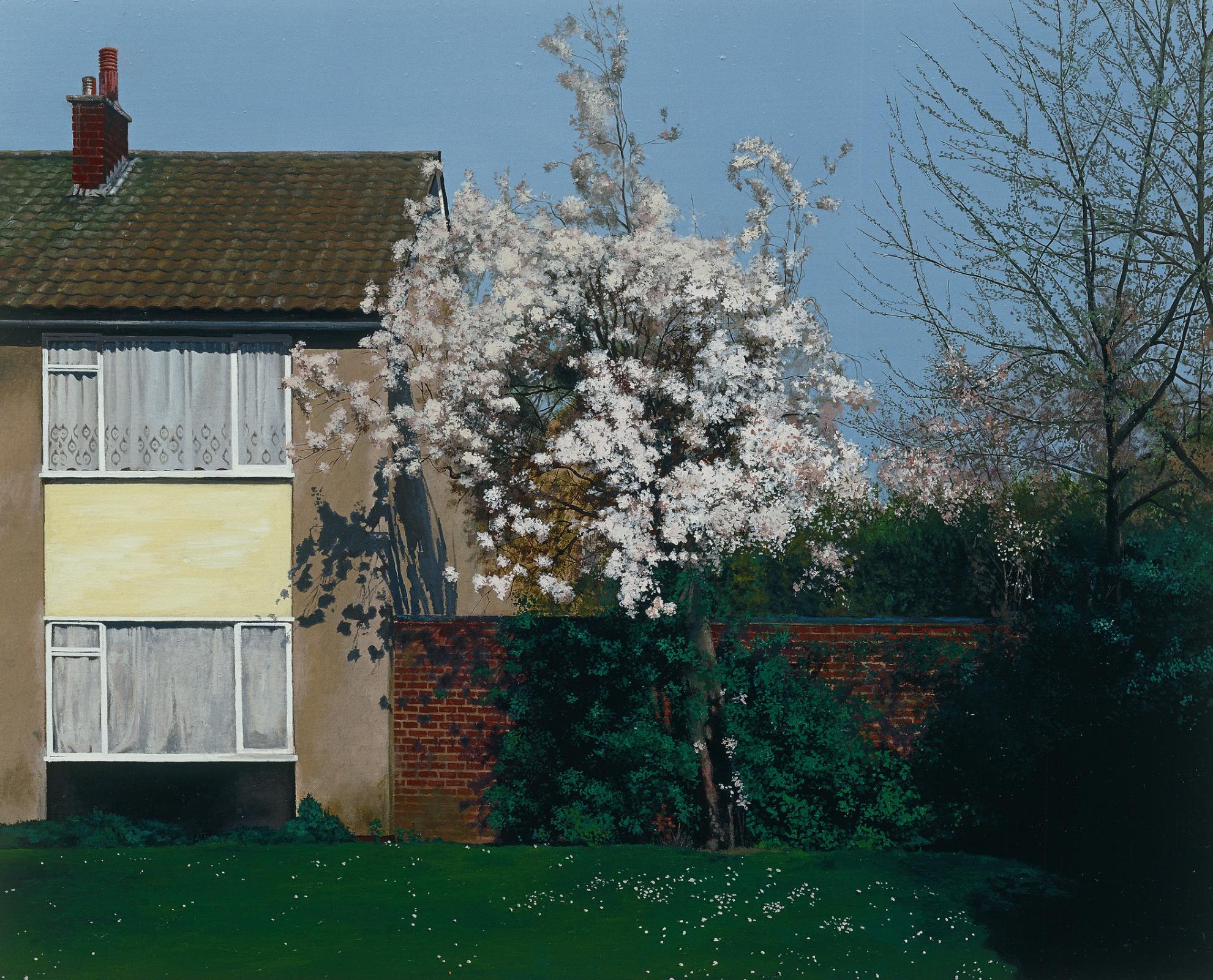
By Roderick Conway Morris
‘These scenes made me a painter,’ said John Constable of the Suffolk countryside where he was born and raised. George Shaw’s birthplace was in industrial Coventry in 1966 and he was brought up on the Tile Hill council estate on the fringes of the city, but the scenes amid which he was raised were equally decisive in turning him into the painter he is today.
Shaw left Tile Hill when he was 18, but its environment and his memories of his childhood and youth there have continued to have a tenacious grip on his imagination. He has revisited the estate, where his widowed mother still lives, time and again. And, during the last two decades, his relationship with this seemingly unremarkable place has produced an outstanding body of work, from which a selection of some 20 paintings and 50 drawings are on show in George Shaw: A Corner of a Foreign Field, an absorbing exhibition curated by Mark Hallett, at the Holburne Museum in Bath.
Although Shaw graduated in Fine Art from Sheffield Polytechnic in 1989, it was not until he was 30 that he won a place for an MA course at the Royal College of Art, where a painting of his family’s modest terraced council house launched him on an extended project of depicting the estate, and on a full-time career as an artist.
The materials he uses are unusual: Humbrol enamel paints – traditionally used to decorate model aeroplanes, ships and soldiers – with board as a support. He also decided to record the buildings, streets, greens and surrounding woods of Tile Hill, but to exclude other elements, such as people, pets and motorcars. This gives his images both a rather eerie and timeless quality. But, by painting the same area repeatedly over more than 20 years, he has in fact almost fortuitously created a remarkable record of the estate’s gradual decline, an experience shared by thousands of similar places the length and breadth of the land.
The Massey Ferguson tractor factory, which once underpinned the local economy, closed in 2004. This was followed by the progressive closure of almost all the communal spaces on the estate: the social centre, pubs, the library and a care home. All the changes have been documented in Shaw’s powerfully atmospheric paintings, which over time have taken on an almost elegiac quality. Some have a marked religious resonance, reflecting Shaw’s Catholic upbringing, such as his Ash Wednesday and Scenes from the Passion sequences.
Shaw has constantly developed his skills and vision, and his most recent pictures here, including Sunrise over the Care Home (in reality a park where the demolished home once stood), confirm him as one of Britain’s most original contemporary landscape artists.
♦ Until 6 May at the Holburne Museum, Bath; 01225-388569; holburne.org








